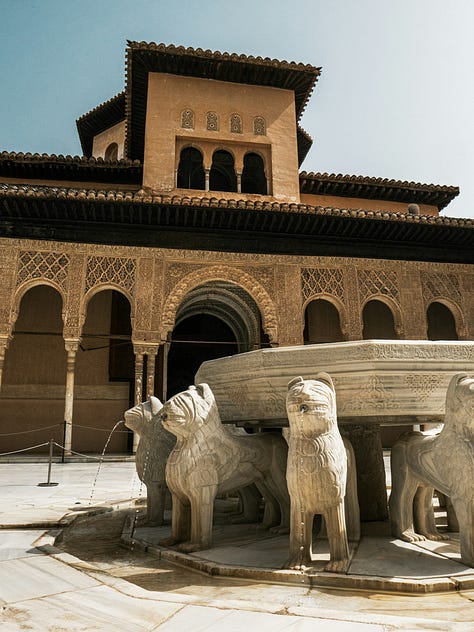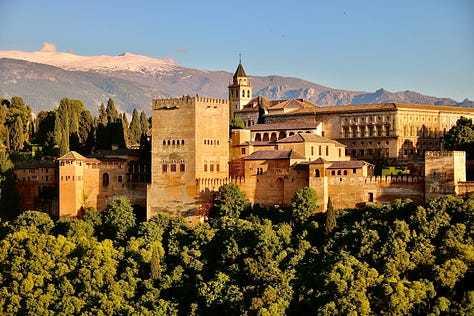


The beautiful medieval hydraulic engineering of the famous Lion Fountain in the Alhambra Palace in Granada, Spain.
The fountain was a water clock.
Each lion represents an hour, with water flowing from each lion's mouth sequentially every hour, culminating in all twelve lions spouting water at noon.
How cool is that?
The fountain features a dodecagonal marble basin supported by twelve lion sculptures, each with distinct facial features and individual markings.
The water supply comes from an ancient system known as the Acequia Real. This channel brings water from the Darro River over 6 kilometers away, feeding into a complex network of subterranean channels and cisterns.
This channel, in itself, provided a very clever understanding of hydraulic energy at the time. Sourcing the water with a minimal sloped channel and then raising the water mechanically to provide sufficient water head for the palace grounds.
Water flows from the lions' mouths into the basin and then into four channels across the courtyard, symbolising the four rivers of Islamic paradise.
The system ingeniously maintains a constant water level in the basin through a central cylindrical unit that allows water to flow both in and out simultaneously. This prevents overflow and maintains the aesthetic of a tranquil surface.
Some of the most ingenious engineering was done before we even had a basic understanding of forces.



